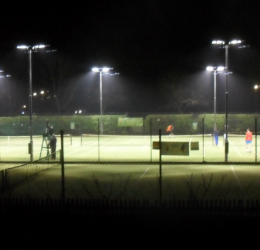Artificial light nuisance
Artificial light nuisance
For general information and advice on statutory nuisances, please visit our main statutory nuisance page. It provides background information on what the requirements are for something to be a statutory nuisance, information on how we investigate and seek remedy, and what information we would require from you.
The Clean Neighbourhoods and Environment Act 2005 amended the Environmental Protection Act 1990 to include artificial light emitted from premises that affects another person in their property under the statutory nuisance provisions.
Light pollution is the intrusion of excessively bright or poorly directed lights onto neighbouring property, which affect the neighbours’ right to enjoy their own property. The following can cause an artificial light nuisance if they’re not maintained or used properly:
-
security lights (domestic and commercial)
-
sports facilities (like floodlit football pitches)
-
decorative lighting of buildings or landscapes
-
laser shows and light art
The relevant legislation does not apply to artificial light emitted from:
-
an airport
-
harbour premises
-
railway or tramway premises
-
a bus station and any associated facilities
-
a public service vehicle operating centre
-
a goods vehicle operating centre
-
a lighthouse
-
a prison
-
premises occupied by the Ministry of Defence or visiting forces
If the source of the light nuisance is a trade or industrial premises or a sports facility, we may not be able to enforce any changes if the operator has adopted best practicable methods to reduce the interference.
What to do if you are being disturbed by artificial light
If you are being disturbed by artificial light and know where it's coming from, it is sensible to speak to the person responsible first and try to resolve the problem in a friendly way. The owner of the light may be unaware of the impact it has on others and often the remedy is quite simple. A minor adjustment may be all that is required, or maybe an agreement can be found about when lights should be turned on or off.
If the owner of the lighting is unwilling to remedy the situation to your satisfaction, you have two options:
-
Contact us. We will investigate your complaint to see if it is a statutory nuisance
-
Consider taking a private legal action under the Environmental Protection Act 1990
Details on both of these courses of action are on our main statutory nuisance page.
Determining if your complaint is a statutory nuisance
When an officer investigates complaints about artificial light pollution, they will need to determine whether the light is a nuisance in law. This will normally be done through an evening site visit and your own evidence.
When looking into complaints about potential light nuisances we will consider:
-
impact of the lighting - whether it interferes with the use of another property
-
whether it may affect health - this can include being unable to sleep
-
how likely it is to affect the average person (unusual sensitivities must be excluded)
-
frequency - how often the disturbance happens
-
duration - how long the disturbance lasts
-
the time when the disturbance happens
-
locality - whether the area is urban, rural or industrial, etc.
-
the purpose of the light and its necessity
There are no set levels for light to be considered a statutory nuisance.
If we find that a statutory nuisance is happening, we will serve an abatement notice. This requires whoever’s responsible to stop or restrict the light. The notice will usually be served on the person responsible but can also be served on the owner or occupier of the premises.
Mitigation measures
If it is decided that there is a nuisance caused by a source of artificial light, there are a number of mitigation measures that will be suggested. These could be:
-
Switching the light source off
-
Limiting the hours of the light source
-
Re-aiming the light source
-
Replacing the fitting(s) with lower power items
-
Fitting of shields or baffles
-
Installing or planting fencing or screening
These measures could be suggested by you and discussed with the owner of the light prior to involving the Council.
Related Pages
Need more information?
Dept. of Environment, Food & Rural Affairs
Please contact:
Public Safety & Regulation
Civic Centre
Newcastle upon Tyne
NE1 8QH
Telephone: 0191 278 7878
Email: psr@newcastle.gov.uk

If you would like to give us feedback on our website, please complete this short online form.